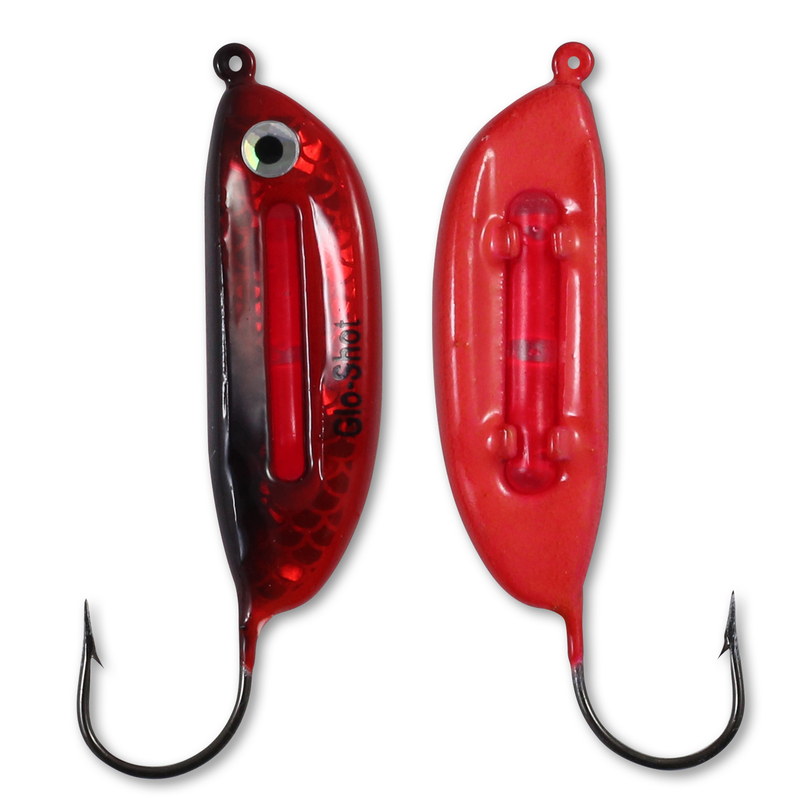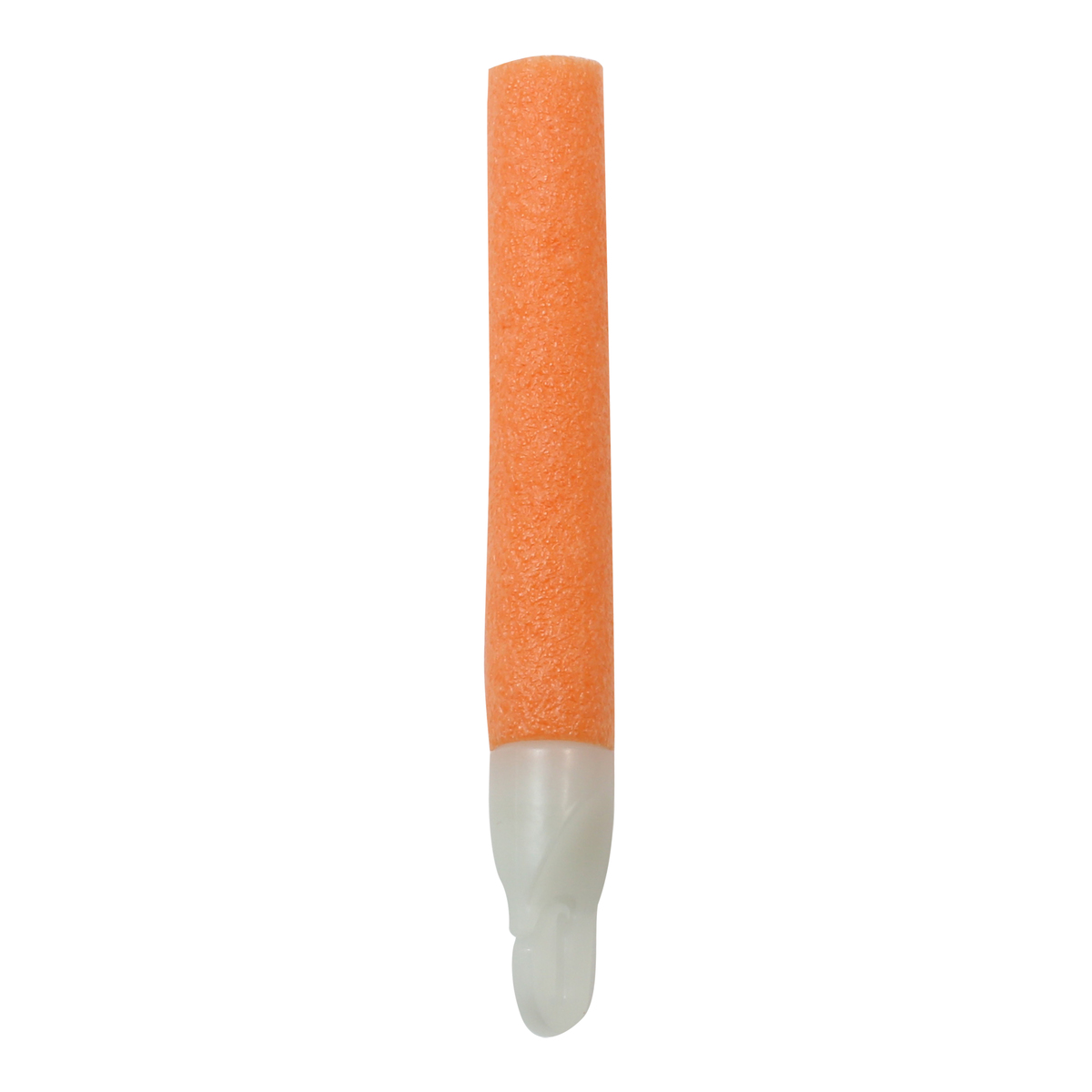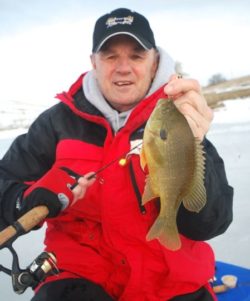Ice Fishing for Bluegill
Getting started in ice fishing can be as easy or as hard as you want to make it.
There are some species of fish that are easier to catch through the ice than others are, these are in the panfish family.
One of these is the Bluegill, a member of the panfish family that are generally eager biters at first ice.
Target Bluegills for Easy Action
In the Midwest, we have several species of panfish that some consider, and every once in a while, you might pick up a Pumpkinseed. They may differ in size and color, but they all seem to like to nibble on baits such as wax worms or plastic bait suspended below a jig or a bobber.
In the winter, look for Bluegills, and Green Sunfish in the shallower water. There are several reasons for this; the first is that they feed on small insects and larvae that live in areas where they find weed growth.
Because of the shallow depth, the sunlight penetrated to the bottom in the shallower water until temperature turned very cold, with the remainder of the weeds vertical allowing the insects and larva a place to overwinter. The weeds make ideal areas for the Bluegill to locate and feed on small aquatic life. Finally, yet importantly, is the fact that since Bluegills are a smaller fish and quite tasty, they like to hang out in the shallow water near these weed beds because the larger predator fish have a difficult time locating them and maneuvering in the shallow water and weeds.
To catch Bluegills through the ice, I like to use a Northland GILL-GETTER JIG tipped with a wax worm or some sort of plastic like the Impulse ZOO PLANKTON.
There is a new Northland lure that I am anxious to try when I am fishing back home in the Glacial Lakes near Watertown and Webster; it is the Northland lead-free Glo-Shot Jig. It is available in 12 fish catching colors and three sizes, 1/8, ¼, and 3/8 ounce, depending on what species of fish you are after.
The GLO-SHOT Jig is a luminescent jig that glows because of the Glo-Shot Sticks placed in the jig that illuminates the entire jig for 8-Plus hours. Anglers who used it indicated the GLO-SHOT JIG works great during the day for fishing under snow-covered ice, during cloudy overcast conditions, in darker water, and when fishing at night.
Anglers I know that have used it say it is very effective bait when tipped with a wax worm, minnow, or minnow head fished vertically, jigged, for dead sticking or below a bobber.
Its unique shape allows it to jig, swim, and flutter below the ice.
Live bait also works well, with the old hook, line, sinker, and a bobber when tipped with a wax minnow or minnow head.
As I mentioned in other articles, when ice fishing, this is when you truly want to use “Light” as cold weather has a significant effect on monofilament line, making larger line weights tough to use during the hard-water months as it creates even more memory than it had before winter. Lighter line with less memory allows the lighter lures we use ice fishing to flutter and rise naturally. If you use too heavy line, split shot, or jig, the Bluegill will either back off and look at the heavy kinky line or spend his time pecking at the split shot and not your wax worm. Use small hooks or jigs and experiment with the number of wax worms you attach to the hook. There are times when Bluegill will want just a tiny little wax worm, and at other times, they will take an ice jig with two or more before they look at the smaller offering.
The bobber or float helps you to detect the bite, and because Bluegill are cold-blooded and in their slow mode, you do not want to overdo it. All creatures during the hard-water period do not move around much and not require a whole lot of food when the water turns hard above them.
Try to use as smallest bobber if possible. The key to bobber fishing is to have just the very top of the bobber sticking out of the water; the less bobber floating out of the water, the less resistance the Bluegill will feel when he takes the bait, holding on to it longer.
I like to use the Northland LITE-BITE ICE FLOAT, their 3″ and 5″ foam Hi-Vis float comes with its bobber stop. Adjustable by unscrewing the corkscrew base and trimming the foam back so it verily floats above the water, allowing fish to pick up the bait and because there is just enough float to hold on top of the water the fish will not feel any resistance and not spit out the bait.
Fish during winter will move vertically as much as they do horizontally, so if you were catching bluegills at 3 feet, and the bite quits, do not move to a next spot too soon. Try going a bit deeper if the sun is out or a bit shallower if it is a cloudy day.
Bluegill and other panfish are fun to catch, great eating, especially when caught from ice-cold water. Bluegills are eager biters, found under the ice on most lakes, ponds, or stock dams.
On some sunny warm day, when you’re looking for something to do, grab your auger, a rod, a few lures, and the wax worms and give Bluegill fishing a try, it will be worth it.
Gary Howey, a Watertown native, now residing in Hartington, Neb. who is a former tournament angler, fishing & hunting guide Howey and inducted into the National Freshwater Fishing Hall of Fame in 2017. He is the Producer/Co-Host of the Outdoorsmen Adventures television series. If you are looking for more outdoor information, check out garyhoweysoutdoors.com or like Gary Howey’s Outdoorsmen Adventures on Facebook or watch his shows on www.MyOutdoorTV.com.
By Gary Howey





